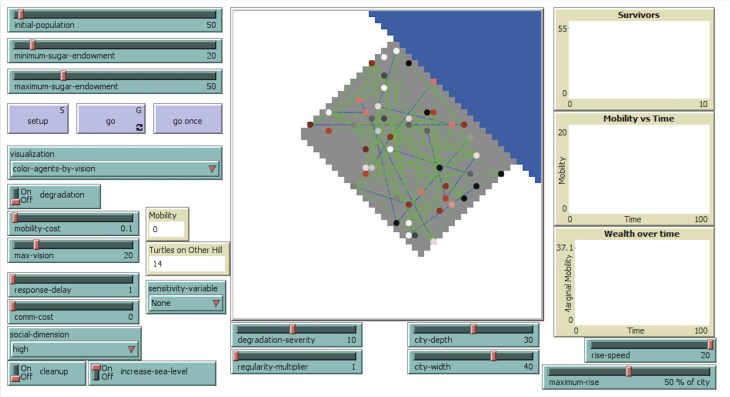An Agent Based Model of mobility in a coastal urban area
We build upon the pioneering agent-based model “Sugarscape” described by Epstein and Axtell in 19961. The “Sugarscape” model simulates a number of mobile agents on a field covered with randomly distributed “sugar”, a resource required by the agents. These agents are distinguished by their ‘vision’, which limits how far they can see and therefore move, and their ‘metabolism’, which dictates how much sugar they need to consume in every timestep.
We continue work that was previously carried out in expanding Sugarscape2. Technological and Social Networks of a Pastoralist Artificial Society: Agent-Based Modeling of Mobility Patterns]: adding deeper constraints to mobility, including a ‘mobility cost’ proportional to distance moved, and social networks between agents which could be used for communication, thus expanding the effective vision of the agents. This version of Sugarscape and our expansions to it, were developed in NetLogo, an agent-based modelling environment.
The current version simulates a coastal city containing agents following our updated mobility rules, utilizing the resources within the city limits while the sea level gradually rises, encroaching upon the city limits and reducing the area available for agents to exploit. This forces the agents to adapt to decreased access to resources and, as seen in the figure below, we track how this affects their mobility, overall wealth and how many are able to successfully carry out this adaptation.

Click picture to watch animated version
- 1Epstein, J. M., & Axtell, R. (1996). Growing Artificial Societies: Social Science from the Bottom Up. Brookings Institution Press
- 2Technological and Social Networks of a Pastoralist Artificial Society: Agent-Based Modeling of Mobility Patterns

